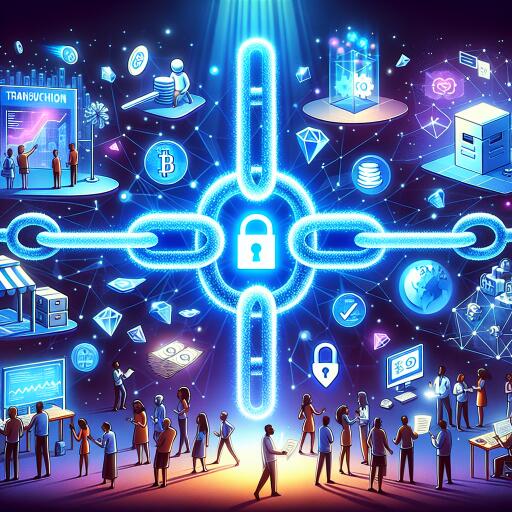
Unlocking the Future: Blockchain’s Role in Reshaping Our World
The promise of blockchain technology has often been likened to the impact of the industrial revolution, heralding a new era of innovation and transformation. This emerging technology has the potential to revolutionize a wide array of sectors, from entertainment and property to legal services, by tokenizing real-world assets. The key to achieving this widespread adoption, however, lies in making the technology as intuitive and accessible as the early days of online commerce.
In a visionary roundtable discussion, industry experts shared their insights on how blockchain could seamlessly integrate into our daily lives, mirroring the ubiquity of digital commerce. The consensus was clear: for blockchain to transcend its current niche status, it must solve tangible problems without the end-user needing to understand the complexity behind the technology.
One of the most compelling applications of blockchain is the use of non-fungible tokens (NFTs) beyond the digital art world. NFTs have the potential to revolutionize the way we certify and license a range of documents—from marriage certificates to property deeds. This isn’t a far-off dream. For example, initiatives are already underway in some states to utilize blockchain for managing car titles, signaling a shift towards broader real-world application.
Decentralized finance (DeFi) and stablecoins represent another frontier where blockchain is making strides. In countries with volatile currencies, these digital assets offer a semblance of stability and reliability previously unattainable. Despite this progress, the user experience of interacting with blockchain technology and DeFi platforms needs significant improvement before they can become mainstream.
The exploration of stablecoins by experts has shed light on their potential to act as a “killer app” within the crypto space. While currently their use is predominantly within the realm of cryptocurrency trading, the sheer volume of transactions highlights a growing acceptance. The appeal of transparent, on-chain transactions could, in time, extend their use far beyond trading, potentially revolutionizing payments and transfers.
Looking at specific applications, the potential for blockchain to secure and streamline access to medical records was discussed. Such a system could ensure that personal health information is accessible securely and instantly, anywhere in the globe. Meanwhile, the gaming industry was identified as a crucial bridge to bringing blockchain technology to the everyday user, leveraging the balance between in-game assets and player ownership.
The discussion concluded with a forward-looking vision of blockchain’s integration into the energy sector. Imagine a future where decentralized networks facilitate the widespread adoption of renewable energy sources like solar power. This could dramatically reduce our environmental footprint and accelerate the transition towards sustainable energy, underscoring the transformative potential of blockchain across sectors.
As we stand on the brink of this technological revolution, the path to blockchain’s mainstream success seems increasingly clear. By making the technology accessible and focused on solving real-world problems, blockchain stands not only to transform how we interact with digital assets but also to fundamentally alter the infrastructure of our everyday lives. The journey to mainstream adoption is complex and filled with challenges, but the potential rewards promise a future that is more interconnected, efficient, and secure.





Leave a Reply